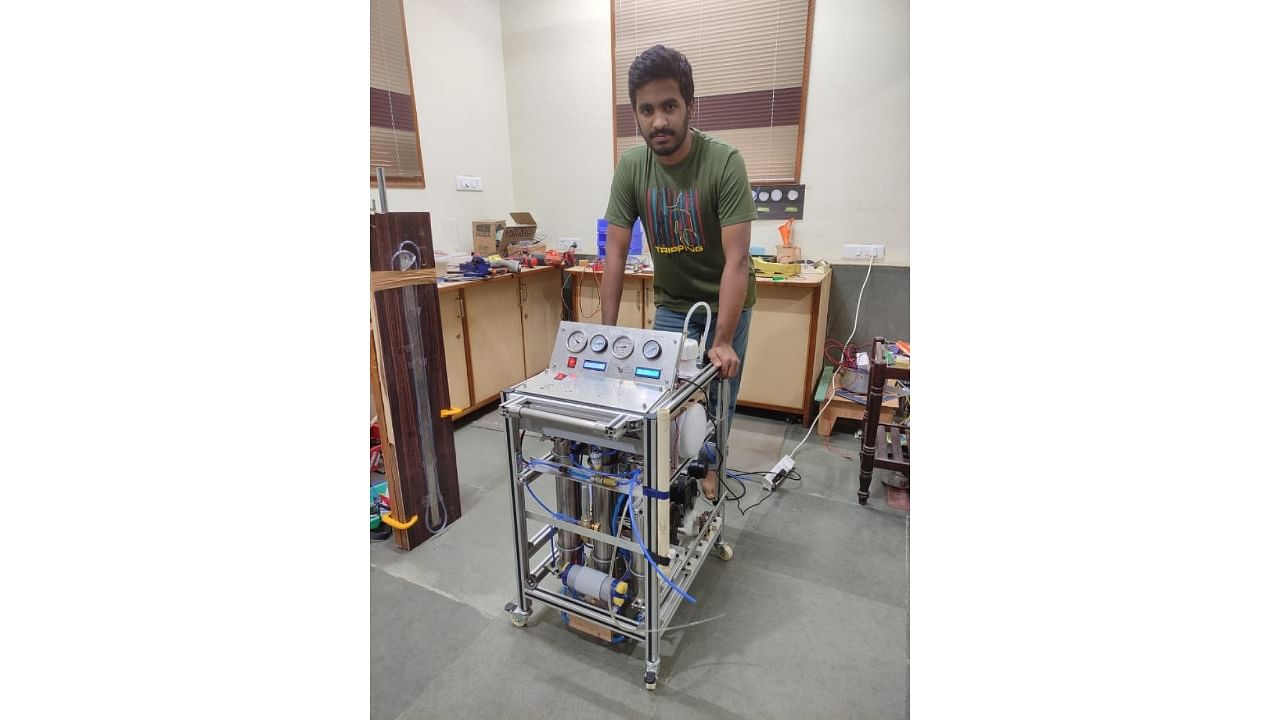
A 19-year-old engineering student has single-handedly invented a prototype of a mini-oxygen plant that produces up to 94.5 per cent pure oxygen and can be used in homes, hospitals as well as industries.
Called OxiPlant, the device works on the pressure swing adsorption (PSA) process. It’s 0.6 metres deep, half-metre wide and 0.7 metres high. It produces a maximum throughput of 11 litres per minute. It’s different from oxygen concentrators available in the market in terms of configuration, flexibility, scalability and ability to monitor.
It took Tejas P Karanji, a first-year student of electronics and communication engineering at PES University, all of eight months to conceptualise, design, fabricate and develop the product. For this, he read several research papers and carried out a number of experimental studies. The prototype has the potential to be developed into a marketable product, Tejas says.
The student was driven by extreme oxygen shortages during the second wave of the Covid-19 last year. “I had volunteered with friends to arrange oxygen. The oxygen concentrators from China weren’t working as well as people hoped they would,” he adds. Tejas decided to try his hand at making a mini-oxygen plant that can work better. “It was a complicated process, no doubt, but I decided to give it a shot,” he says.
Tejas’s achievement has amazed Dr Chandrashekar, head of the Department of Critical Care Medicine at the state-run Institute of Gastroenterology Sciences and Organ Transplant. “I was surprised to see a student single-handedly developing this at home when a group of researchers at the IISc have been working together to develop an oxygen concentrator at the premier institute,” Dr Chandrashekar said.
He found the machine working well during a review at the student’s home. It gave the required oxygen purity and pressure at the same cost of Rs 30,000 to Rs 35,000, the doctor said.
“Oxygen concentrators are generally noisy, bulky and have a condensation problem. OxiPlant did not have any,” he added.
Bangalore South MP, L S Tejavi Surya, praised the student in a letter that he wrote him on February 16. “I am happy to note that as a first-semester engineering student, you have done commendable work in conceptualising, designing and building a working prototype of the OxiPlant...”
“I am informed that the OxiPlant... functions at a professional standard of being used in a medical setting, which is an extraordinary achievement of enterprise and execution,” the letter added.
Surya also sent a graphic designer and a mechanical engineer to check out the product recently.
How it works
Two cylinders are filled with zeolite, and compressed atmospheric air is passed through it. The zeolite absorbs carbon dioxide, nitrogen and unwanted gasses in the air. The output oxygen has 94 per cent purity at a flow rate of 11 litres per minute.
What’s next?
Since getting such a device certified by the relevant authorities is a long-drawn-out and expensive process, Tejas wants to make the design open-source so that those interested can take it forward commercially.
Watch the latest DH Videos here:
